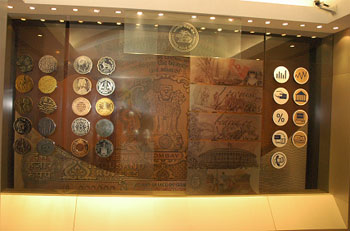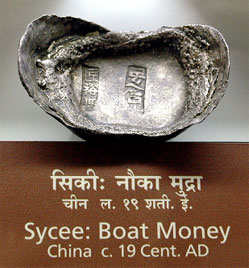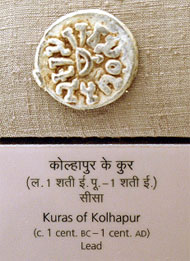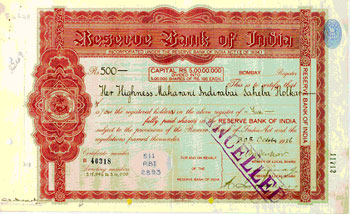 |
| RBI's Monetary Museum |
| The Reserve Bank of India (RBI) is the central bank of the
country. As the central bank, it is also the custodian of the country's
monetary heritage. To document and preserve India's monetary history for
the posterity and as a part of the Reserve Bank's education and outreach
programme for the common man, especially the students, the Reserve Bank has
conceived the Monetary Museum. |
 |
| Mural: Explaining the evolution Of Money |
| The first of its kind in India, the Reserve Bank's
Monetary Museum was inaugurated in 2004 by India's President, Dr. A P J
Abdul Kalam. The Museum attempts to demystify money as it evolved from |
|
|
| the
age old barter system to the present stored value cards. On display in
the Museum are, coins of various sizes and shapes issued since 6th century
B.C. to the present times. There are also panels of bank notes and
instruments of indigenous banking like hundies. All this is explained
through graphic panels in English and Hindi. |
|
 |
| Shapes & Sizes of Money |
| The Museum also has a screen for trading in foreign
exchange with live quotes on foreign exchange, commodities and share
prices. Visitors can not only see how exchange rates of various
currencies change but can also take imaginary positions in currency, sell or
buy and make or lose money! |
|
|
| Ancient Coinage |
| For children, information kiosks provide information
with entertainment. They can learn about features of currency notes and facts
about coins while playing games and while leaving, one can pick up brochures on
the story of money in India, India's contemporary currency, Indian coinage and
precious signatures. One can also buy mementos like posters on coins and
currency notes, post cards and greeting cards. |
|

|
|
 |
Financial Instrument: RBI Share
Certificate |
|
|
|
|